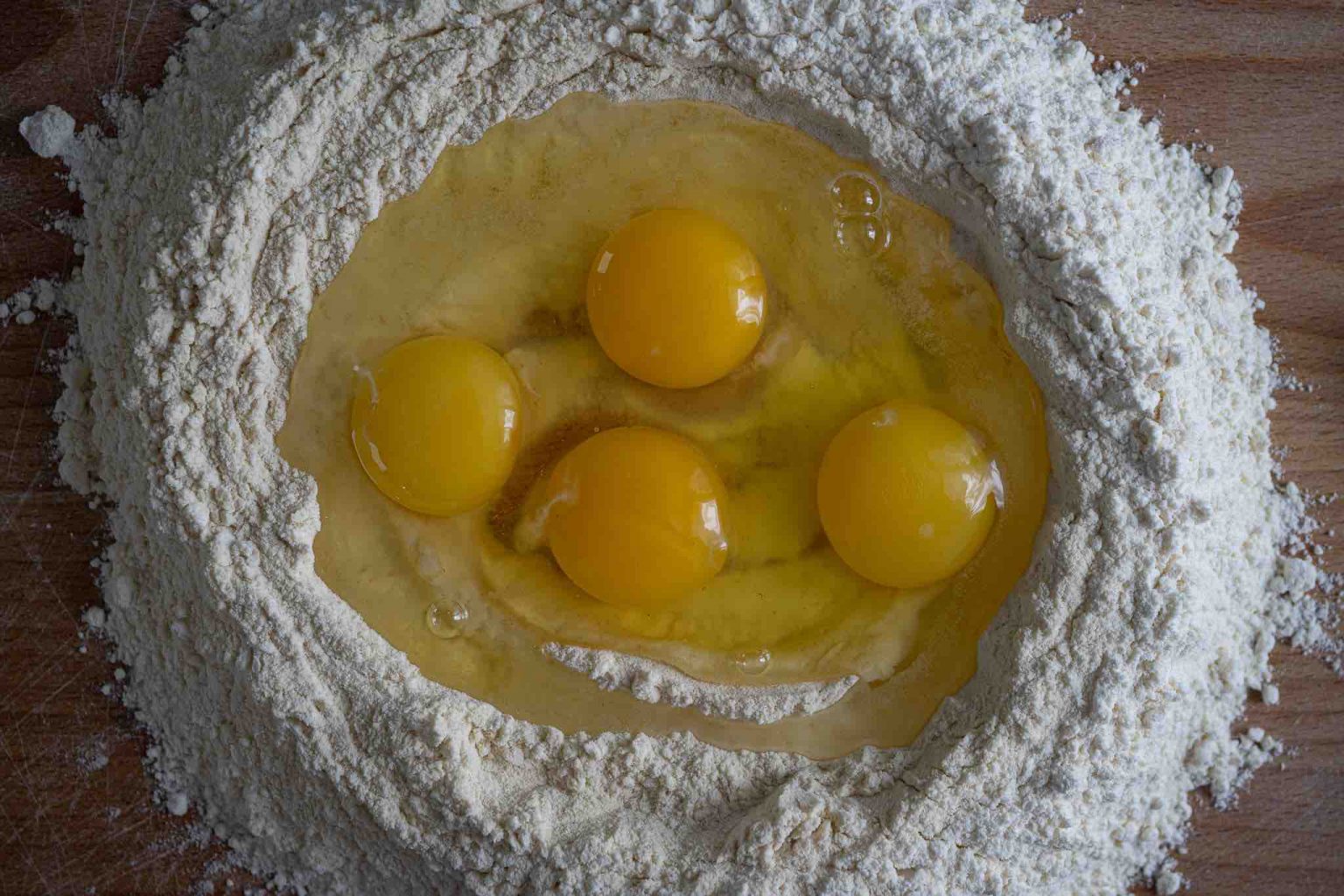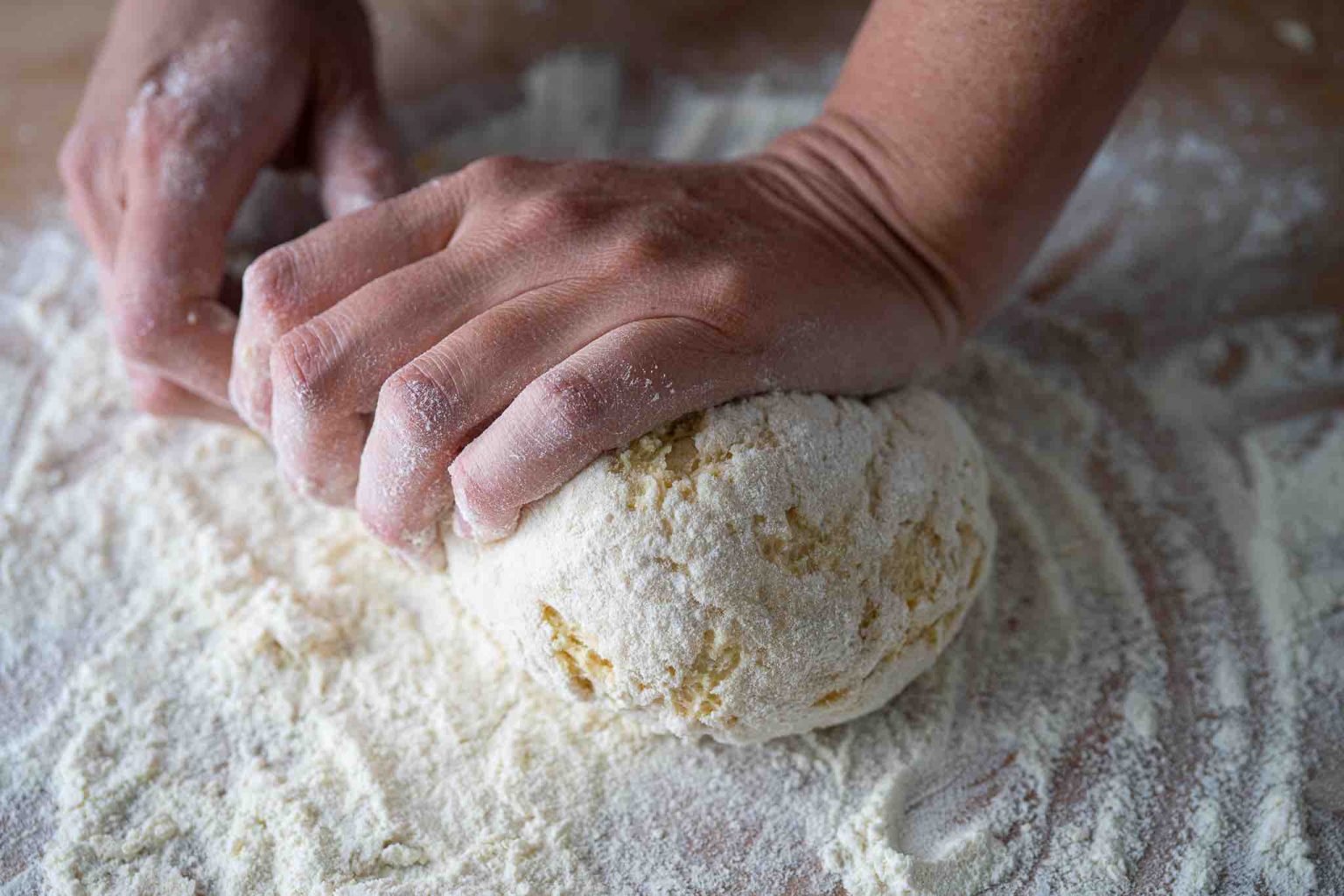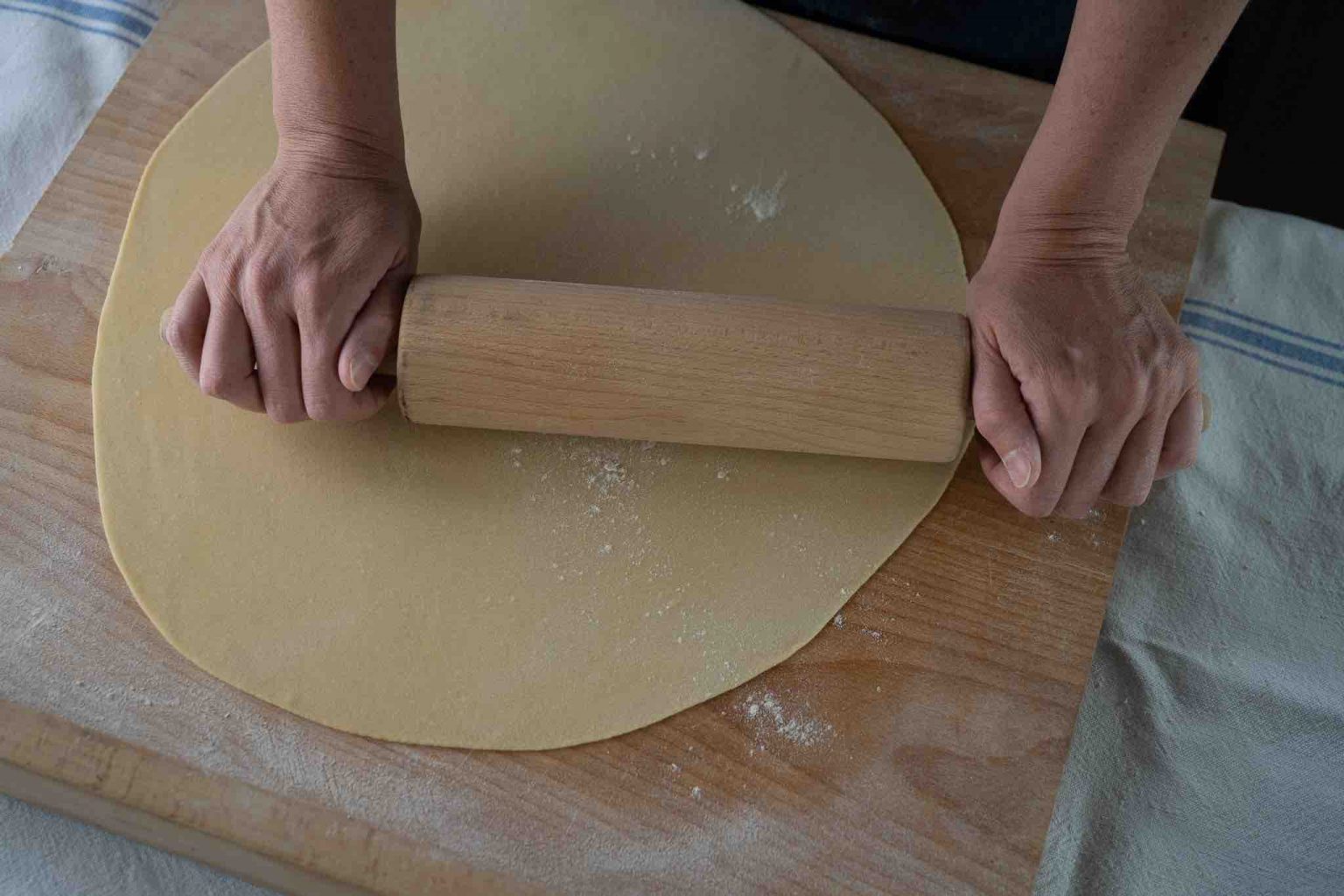Homemade Pasta Dough
Rated 5.0 stars by 1 users
Category
Homemade Pasta Dough
Cuisine
Italian
Author:
Alice Noel Fabi
Servings
4
Prep Time
60 minutes
Cook Time
10 minutes
Simple ingredients, time and a little bit of love is all you need to make your own fresh pasta dough at home! We’re all together in this lockdown so this is the perfect time to try it out. Don’t be intimidated, it really is easier than you think. We even sell the perfect FRESH PASTA KIT that can be delivered at your door, you really have no excuses.

Ingredients
-
Unbleached, unenriched semolina flour, 200g (approx 7 ounces)
-
Unbleached, unenriched white wheat flour, 200g (approx 7 ounces)
-
Large pasture raised eggs (70 g) 4
Directions
On a clean surface, make a pile out of flour and form a deep well in centre. Break the eggs into the well and beat very gently with a fork, gradually incorporating flour from the sides of the well, trying not to make the egg spill out of the well.
When mixture becomes too thick to mix with a fork, begin kneading using your hands. If flour does not fully incorporate into the dough add half a teaspoon of water (be careful not to add too much!), or more if needed. On the other hand, if the dough is too sticky add a pinch of extra flour. All eggs have a different size, so this may occur.
Dough is very sticky at the beginning and becomes more elastic and smooth after around 4 minutes of kneading. Once the dough is formed, continue kneading for 3 more minutes to allow the dough to reach its maximum elasticity and firmness. Long kneading is important in order to develop the gluten in the flour and to prevent dough from tearing apart later on.
- Roll dough into a ball shape and wrap tightly in plastic wrap and let rest for 30 minutes.
- The traditional way of rolling out the pasta is by using a simple wood rolling pin, so even if you don’t have a pasta machine don’t be intimidated to make fresh pasta at home. Dust working surface with flour and start rolling dough one piece at a time. After every roll, make a quarter turn and repeat the same movement until you have achieved the desired thickness. (Approximately the thickness of a playing card).
If using a machine to roll out the pasta, make sure to firmly attach it to a clean working surface before you start. Then set the pasta machine at its widest setting – and roll one slice of pasta dough through. Fold the dough into thirds and pass through the machine again. Repeat this process 3 times. Lightly dust both sides of the pasta with a little flour every time you run it through. After 3 times of rolling the dough in the widest setting, click the machine setting down, and pass the dough through several times, starting from the widest setting down to around the narrowest, until reaching the thickness of a playing card.
Once you have your sheet of pasta it’s time to pick your shape. Make sure to dust dough on both sides so it doesn’t stick to itself. There are hundreds of shapes to experiment with, from simple large lasagne sheets, to long pasta such as tagliatelle, pappardelle and tagliolini, or short shapes such as farfalle and maltagliati. You can also make a simple filling using a seasonal vegetable puréed and mixed with ricotta and parmigiano reggiano and create your own filled pasta.
Buon appetito!
Recipe Video
Recipe Note




0 comments